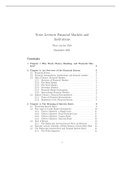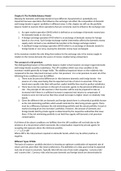College aantekeningen
Summary Lectures Financial Markets and Institutions
- Instelling
- Universiteit Utrecht (UU)
Samenvatting van alle lectures van dr. Bilge Karatas. Het bevat hoofstuk 1, 2, en 4 t/m 13 van het boek "The Economics of Money, Banking, and Financial Markets" (global edition) van F.S. Mishkin. Alle relevante stof, formules, grafieken en berekeningen zijn toegevoegd en uitgelegd. Ook zijn de antw...
[Meer zien]






